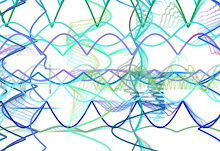1. What is a tessellation? A tessellation is an object that is repeated many times in a piece to create a pattern. It covers the entire plane of the piece with no empty space.
2. Write a couple of paragraphs describing the life and work of M.C. Escher. Pick out important facts that describe who he is, how he worked, and why he is famous. MC Escher (born Maurits Cornelis Escher) is known as the Father of tessellations. He was born on June 17th, 1898, in Holland. In 1918, he enrolled in the “School for Architecture and Decorative Arts,” where he studied until 1922. There, he studied under Mesquita, who greatly helped him develop his skills. Later in his life, he visited Italy, where he met his future wife, and developed many pieces illustrating the coastline.
In 1925 he made his first tessellation, a block print of lions. This achieved his goal of covering the plane without any overlapping figures. After this, he started drawing tessellations more deliberately, around 1933. He also proved that the word convex was not necessary, beginning his own “Layman’s Theory” and classifying all his drawings based upon it. In his following years, Escher produced other art, but always went back to produce more tessellations. Eventually, he made 137 of them. His most perfected ones are works where two streams are combined in a design, like his work “Reptiles.”
Practice tessellation drawing:


No comments:
Post a Comment